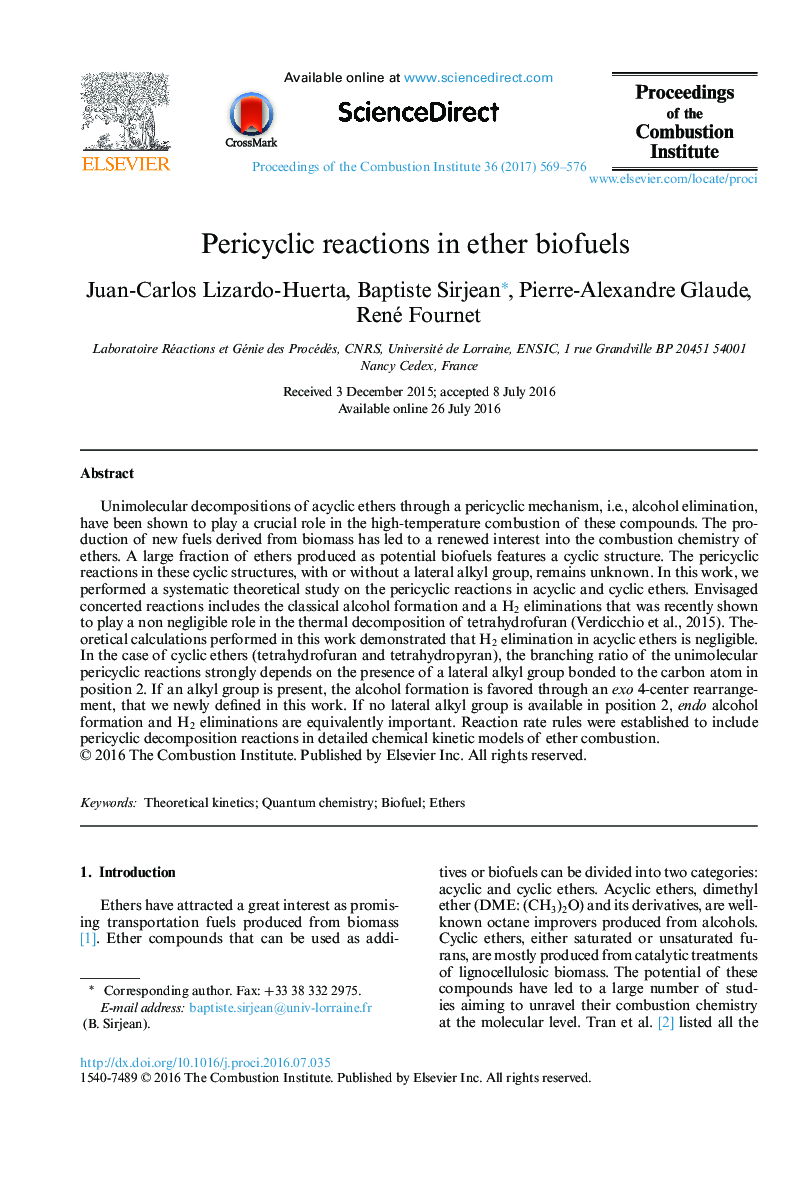| Article ID | Journal | Published Year | Pages | File Type |
|---|---|---|---|---|
| 6478022 | Proceedings of the Combustion Institute | 2017 | 8 Pages |
Unimolecular decompositions of acyclic ethers through a pericyclic mechanism, i.e., alcohol elimination, have been shown to play a crucial role in the high-temperature combustion of these compounds. The production of new fuels derived from biomass has led to a renewed interest into the combustion chemistry of ethers. A large fraction of ethers produced as potential biofuels features a cyclic structure. The pericyclic reactions in these cyclic structures, with or without a lateral alkyl group, remains unknown. In this work, we performed a systematic theoretical study on the pericyclic reactions in acyclic and cyclic ethers. Envisaged concerted reactions includes the classical alcohol formation and a H2 eliminations that was recently shown to play a non negligible role in the thermal decomposition of tetrahydrofuran (Verdicchio et al., 2015). Theoretical calculations performed in this work demonstrated that H2 elimination in acyclic ethers is negligible. In the case of cyclic ethers (tetrahydrofuran and tetrahydropyran), the branching ratio of the unimolecular pericyclic reactions strongly depends on the presence of a lateral alkyl group bonded to the carbon atom in position 2. If an alkyl group is present, the alcohol formation is favored through an exo 4-center rearrangement, that we newly defined in this work. If no lateral alkyl group is available in position 2, endo alcohol formation and H2 eliminations are equivalently important. Reaction rate rules were established to include pericyclic decomposition reactions in detailed chemical kinetic models of ether combustion.
